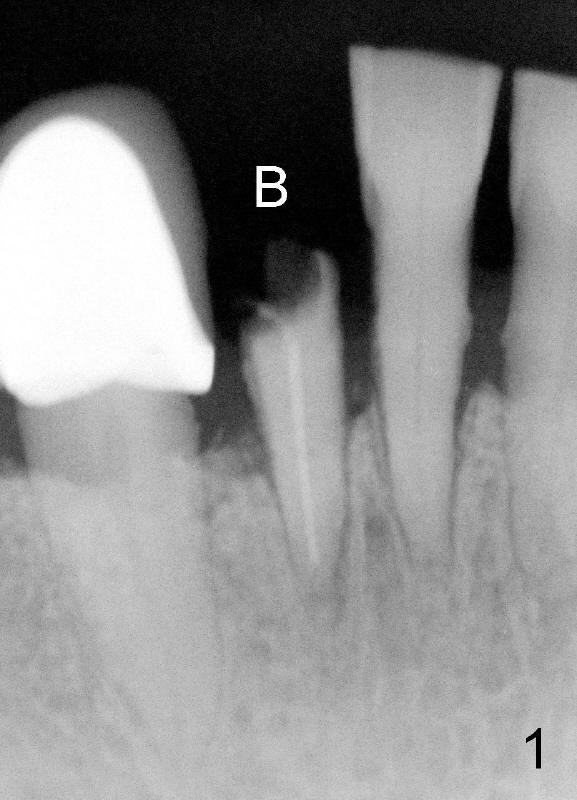
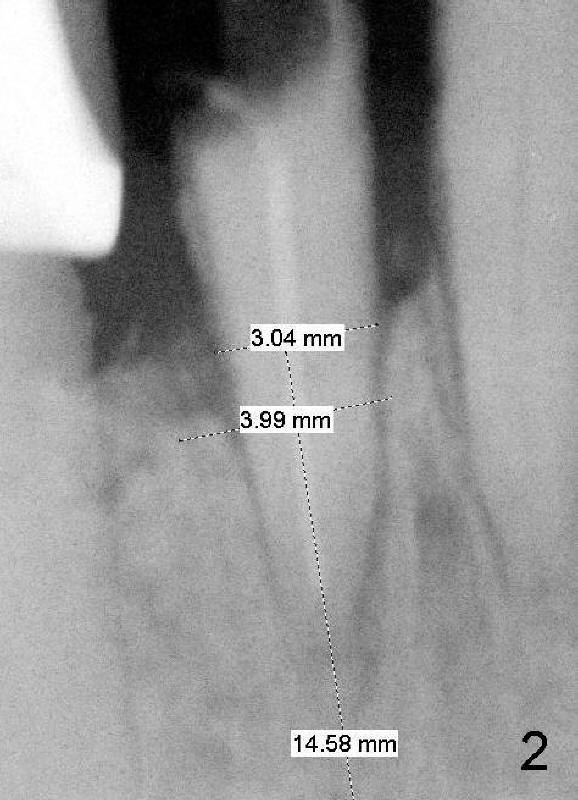
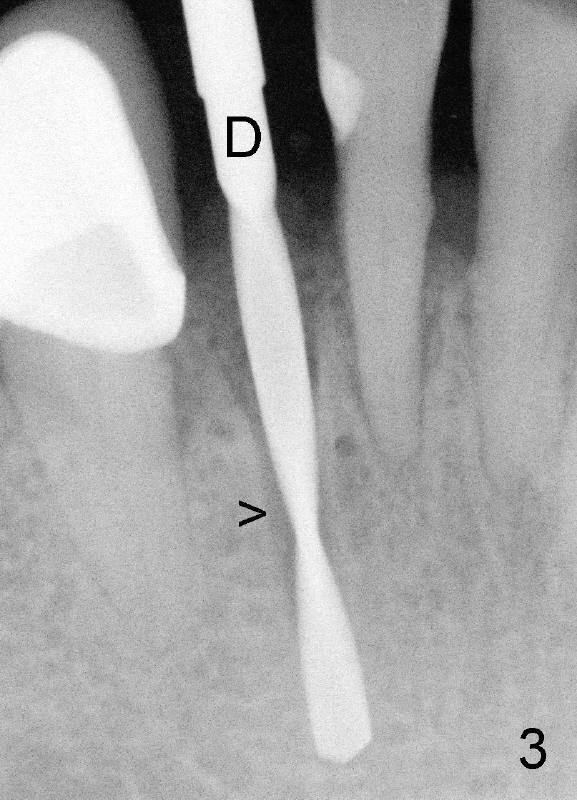
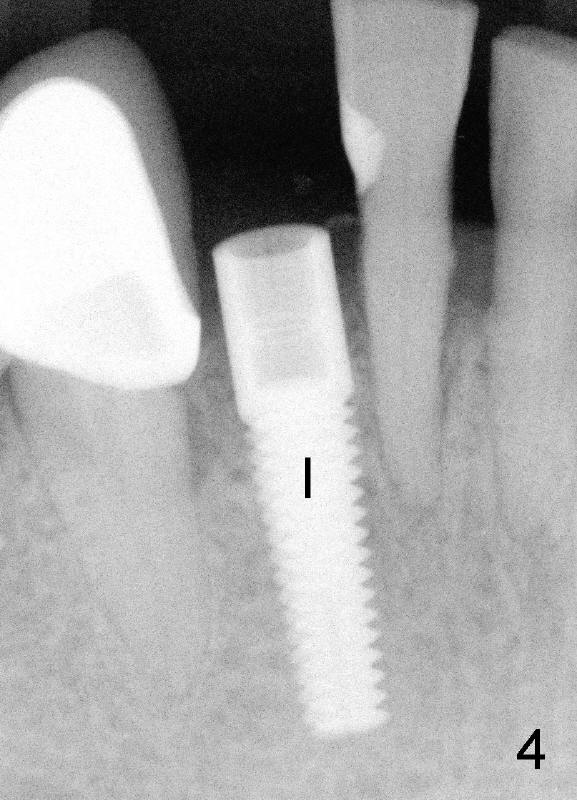
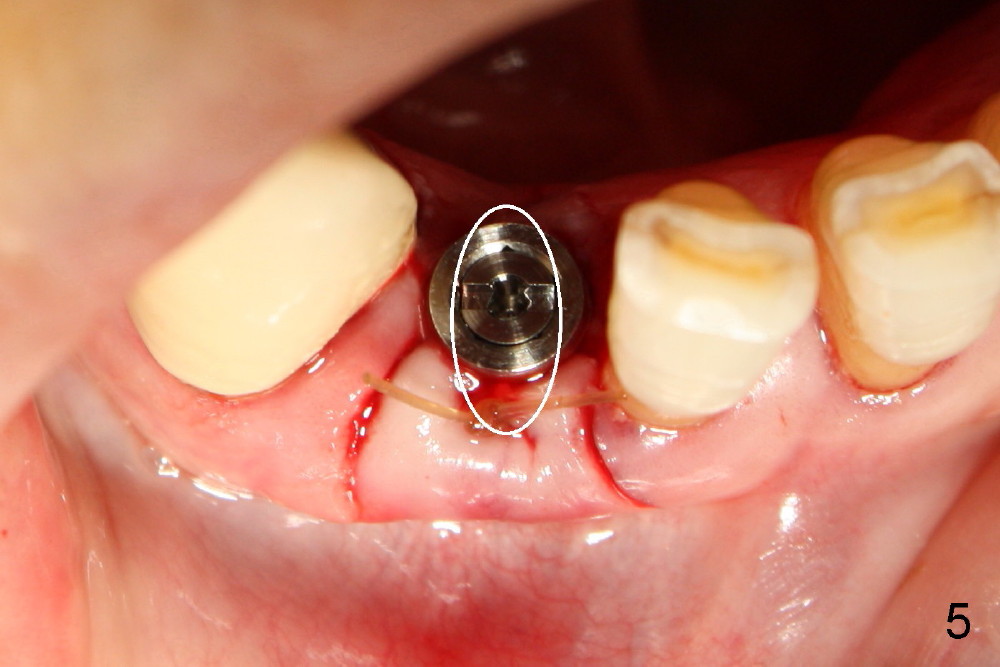
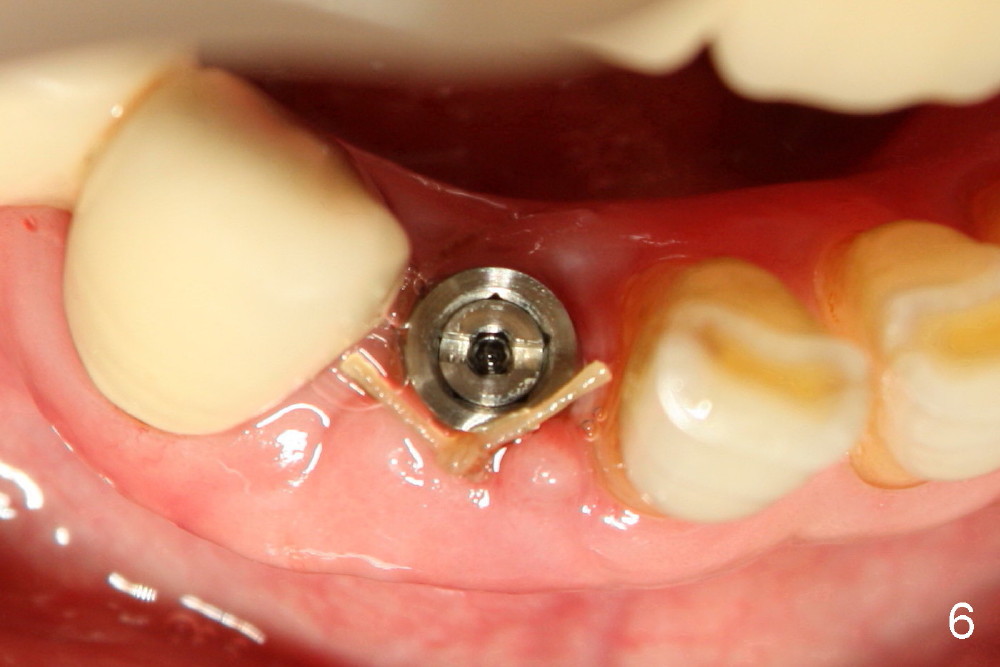
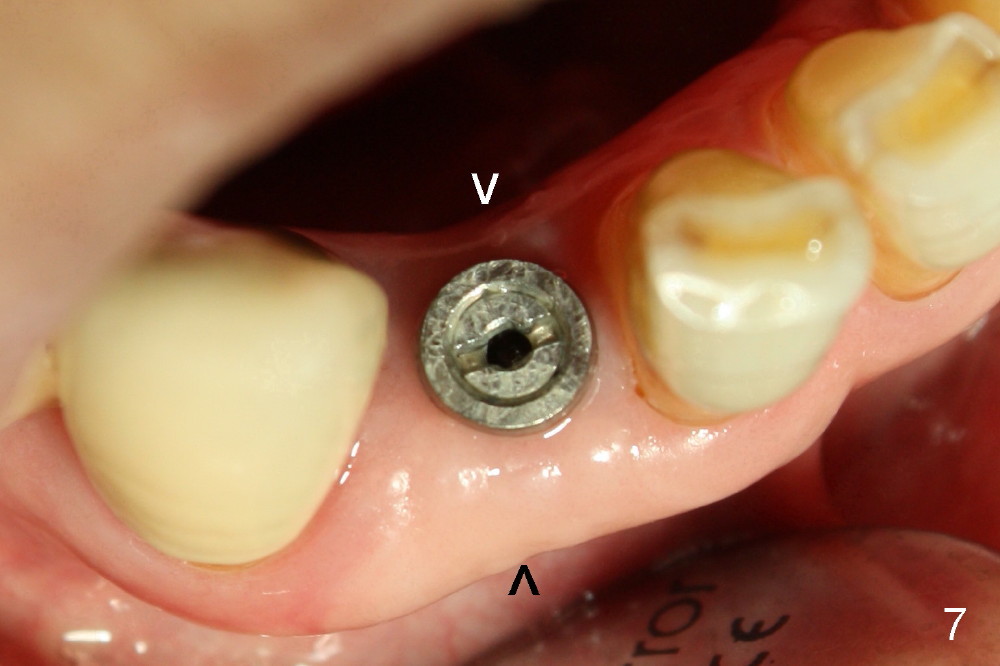
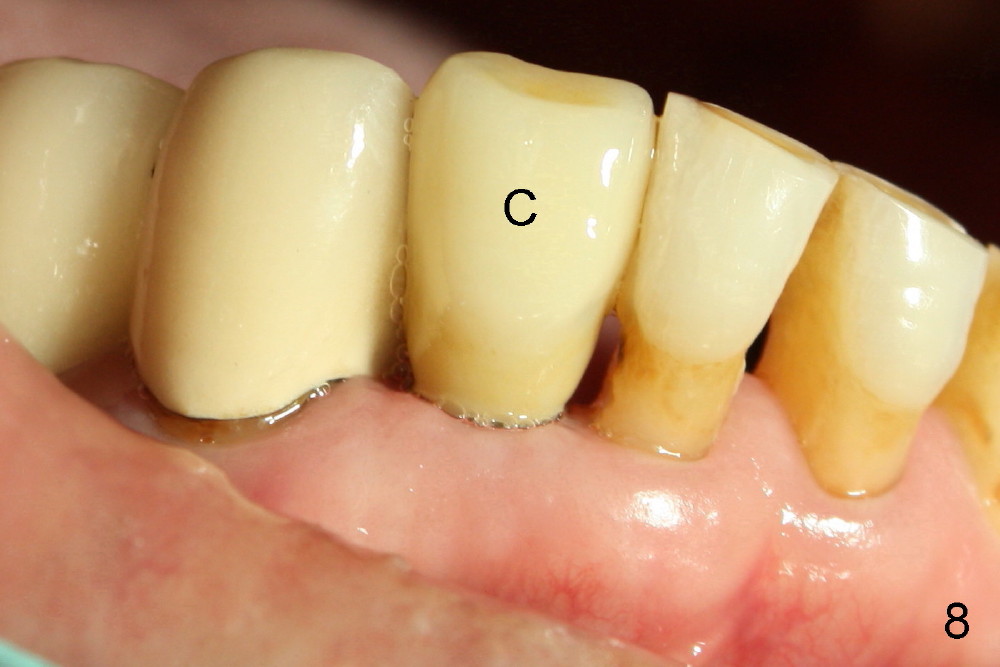
 |
 |
 |
 |
 |
 |
||
 |
 |
||
Follow the lead
Mrs. Lin breaks one of her front teeth (Fig.1 B), while visiting her granddaughter-in-law in Atlanta. The latter is expecting a baby. Mrs. Lin is going to return to home country shortly and will be back to Atlanta once in a while. She wants quick treatment.
We decide to have extraction and immediate implant after studying the X-ray in detail. The side to side width of the root is 3 mm (Fig.2), but our experience tells us the back to front width is a little more. An implant with 4 mm in diameter appears to be fit in the space between the two neighboring teeth.
After extraction, a small diameter drill (Fig.3 D) is used to extend the socket. The arrowhead (>) indicates the original root tip. With the guidance of the socket, direction of drilling is much easier. This is one of advantages of immediate implant. The doctor has something to follow.
The implant immediately placed (Fig.4 I) is a little wider and much longer than the root so that it is stable and tightly engaged into the bone for healing.
To place the immediate implant, no incision is needed. As mentioned above, the back to front dimension of the socket is much larger than the side to side one (Fig.5 white circle). After the implant is placed, there is a hole in the front of the implant. So incision is made to move the gums backward to close the hole to prevent food from dropping in. Sutures are placed to hold the gums in place. The wound heals well in six days (Fig.6) and completely before the patient leaves Atlanta in twenty-five days after surgery.
Seven months Mrs. Lin returns for crown (Fig.8 C, as compared to Fig.1 B). The jaw around the implant remains as wide (Fig.7 between arrowheads) as before (Fig.5,6). This is the beauty of immediate implant. It prevents jaw bone from shrinking after extraction.
Xin Wei, DDS, PhD, MS 1st edition 09/11/2012, last revision 03/22/2013